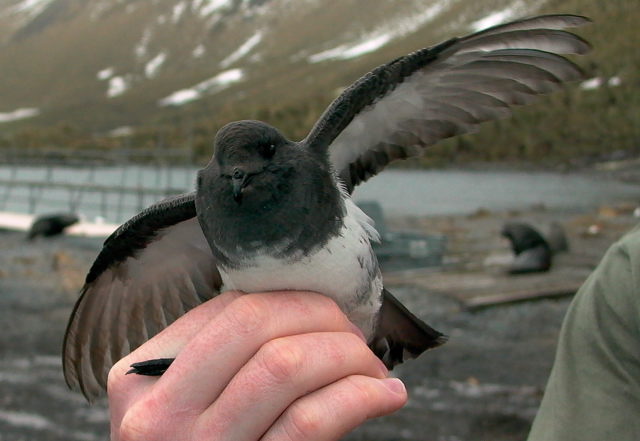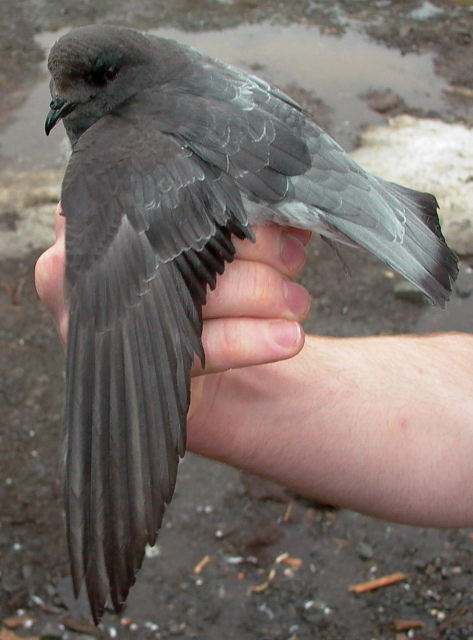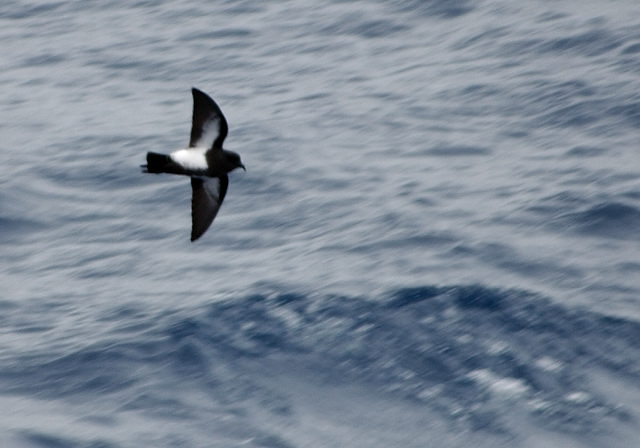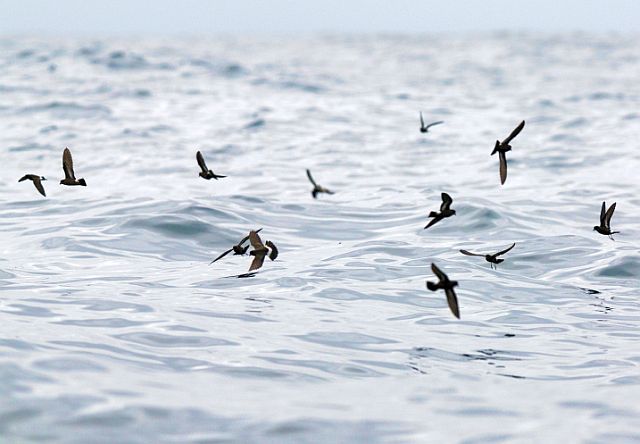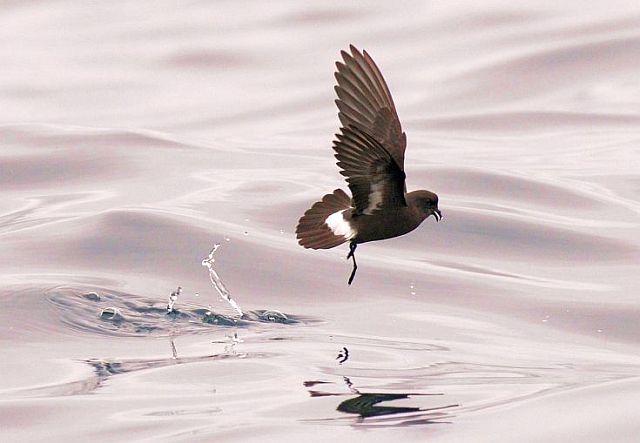Order: Procellariiformes. Family: Hydrobatidae
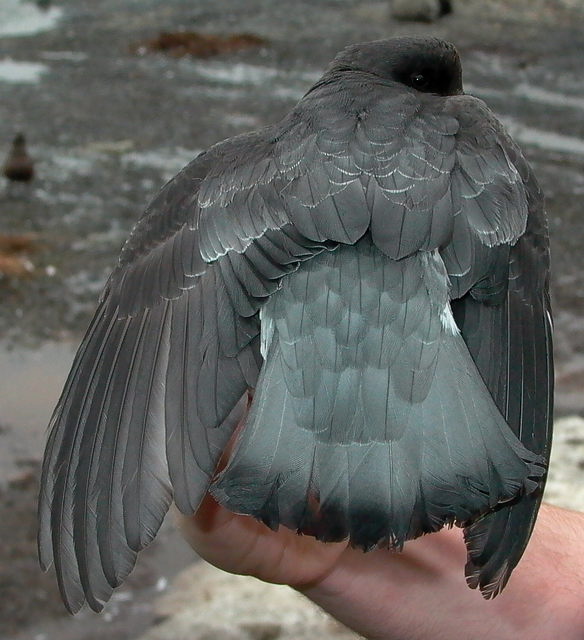
Description
Wingspan: 39 cm. Length: 16-19 cm. Weight: 21-44 g. Grey-backed Storm Petrels are compactly built, with short tails and legs, with the feet barely reaching past the tip of the tail. In flight they flutter more and use their legs less than other storm petrels, but at times do run off the surface of the water. Upperparts black with grey wash to back and wing coverts, grey tail and rump. Tail has a black terminal band. Appears dark hooded. Underparts have black chest, white belly and black undertail. Iris and bill black, the latter whitish towards the base of lower mandible; legs and feet dark brown.
Similar species: The species is readily distinguishable from the other Storm Petrels by its diminutive size and the absence of white on the rump. May be confused with Black-bellied Storm Petrel, which has a dark-hooded appearance due to its dark head and white belly. The thick black median ventral of Black-bellied, as wall as the entirely dark underside of the primaries and undertail coverts, the all dark back, and the white rump band quickly eliminate confusion with Gray-backed. Both White-bellied and Black-bellied storm-petrels also show little foot projection beyond the tail.
Distribution
Southern Oceans. The Grey-backed Storm Petrel has a circumpolar distribution in the subantarctic, breeding on islands from the Falkland Islands (Islas Malvinas) in the south-west Atlantic east to the Chatham Islands (New Zealand). Individuals can winter nearer to the continents.
Habitat
Pelagic. Often found at sea near dislodged, floating kelp or other drifting material.
Diet
Immature barnacles, crustaceans, small squid & small fish. It catches prey mostly by pattering over the surface whilst in flight, but also by dipping and shallow plunging.
Breeding
The Grey-backed Storm Petrel nests in colonies or alone, usually on or near ground in dense tussac grassland or other vegetation on flat, sloping or occasionally steep ground. Its breeding season starts in October or November. Single egg is laid and incubation lasts c. 45 days. Fledging time unknown, but chicks on the wing in March-April.
Status
Extreme vagrant to the region with two records to date. Uncommon in offshore waters at Gough, Marion and Prince Edward islands.



